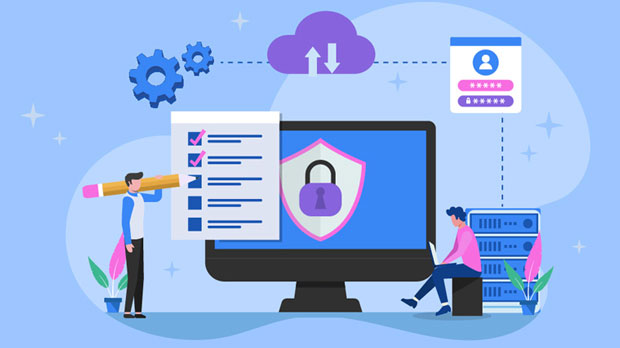Best Residential Socks5 Proxy vs VPN, which is better for long term privacy protection?
In the ever-evolving digital landscape, maintaining long-term online privacy is a priority for many individuals. Two popular tools designed to protect users' anonymity and secure their internet activity are residential socks5 proxies and Virtual Private Networks (VPNs). While both offer privacy benefits, they operate differently and cater to distinct needs. In this article, we will explore the fundamental differences between residential SOCKS5 proxies and VPNs, their strengths and limitations, and help you determine which is better for long-term privacy protection. What is a Residential socks5 proxy?A SOCKS5 proxy, or "Socket Secure" version 5, is an internet protocol that allows users to route their internet traffic through a proxy server. It works by masking the user’s IP address and providing an alternative, making it appear as if their online activity is originating from the proxy server instead of their actual location. Residential SOCKS5 proxies, specifically, use real residential IP addresses that are assigned to homeowners by Internet Service Providers (ISPs). These proxies are typically more difficult to detect than datacenter proxies because they appear as legitimate residential users, making them useful for bypassing geographic restrictions and preventing detection by websites.While SOCKS5 proxies are primarily used for anonymity, they do not offer the same level of encryption or security as VPNs. They only reroute traffic at a basic level, making them useful for specific tasks such as accessing geo-blocked content, but not necessarily for long-term privacy protection in more sensitive scenarios.What is a VPN?A VPN, or Virtual Private Network, is a security tool that encrypts a user's internet connection and routes it through a private server. This encryption prevents third parties, such as hackers, ISPs, and even government authorities, from monitoring or intercepting the user's online activities. VPNs are widely used for securing sensitive data, maintaining privacy, and accessing content from restricted regions.When a user connects to a VPN, their entire internet traffic is encrypted, providing a much higher level of security than a SOCKS5 proxy. VPNs not only mask the user's IP address but also ensure that data remains private, even on public networks. This encryption makes VPNs ideal for users who prioritize security alongside privacy, especially for long-term, ongoing protection.Comparing SOCKS5 Proxies and VPNs for Privacy ProtectionWhen choosing between residential SOCKS5 proxies and VPNs for long-term privacy, several factors must be considered. These factors include encryption, data security, ease of use, and the overall effectiveness of each solution in protecting privacy over extended periods.1. Encryption and SecurityOne of the most significant differences between SOCKS5 proxies and VPNs is the level of encryption they provide. A VPN uses strong encryption protocols such as OpenVPN, IKEv2, or WireGuard to secure all of the user's internet traffic. This means that even if a hacker intercepts the data, it will be unreadable without the decryption key. VPNs offer robust protection against surveillance, man-in-the-middle attacks, and data leaks.On the other hand, a SOCKS5 proxy does not encrypt the traffic passing through it. While it masks the user’s IP address and reroutes traffic, it does not offer protection from potential interception or monitoring. This lack of encryption makes SOCKS5 proxies less secure than VPNs, especially when it comes to handling sensitive data or using public Wi-Fi networks.2. Anonymity and IP MaskingBoth residential SOCKS5 proxies and VPNs provide the ability to mask the user's IP address, making it difficult for websites and online services to track the user’s physical location. However, SOCKS5 proxies are often preferred for specific tasks like web scraping, bypassing geo-restrictions, or making it appear as though the user is accessing the internet from a particular region. Residential SOCKS5 proxies have the added benefit of using real residential IPs, which are less likely to be flagged or blocked by websites.In comparison, a VPN will typically use one of its own private IP addresses, which can be shared by multiple users, leading to potential detection or blacklisting by websites. However, VPNs offer a higher level of anonymity overall since they also encrypt your traffic, preventing it from being analyzed by third parties, which is not possible with SOCKS5 proxies.3. Data Logging and PrivacyVPNs typically offer better privacy in terms of data logging policies. Many VPN providers have strict no-logs policies, meaning they do not store any records of your online activity. This is a crucial feature for long-term privacy protection, as it ensures that even if the VPN service is subpoenaed by authorities, there is no data to hand over. However, it is important to verify the privacy policy of the VPN provider to ensure that they genuinely do not log user activity.Residential SOCKS5 proxies, on the other hand, may or may not offer the same level of privacy. The provider of the proxy service could potentially track your activities, which can undermine your privacy if the service is not trustworthy. Additionally, since residential proxies are routed through real residential IP addresses, any data logged by the proxy service could potentially be tied to a physical address, making it less anonymous than a VPN.4. Speed and PerformanceWhen it comes to speed and performance, residential SOCKS5 proxies generally offer better results for users seeking minimal latency. Since SOCKS5 proxies do not encrypt traffic, there is less overhead compared to VPNs, resulting in faster speeds for browsing and accessing content. This makes SOCKS5 proxies an appealing choice for tasks that require speed, such as streaming or accessing geo-blocked websites.However, VPNs, due to the encryption they provide, can sometimes cause slower connection speeds, especially if the VPN server is geographically distant. Some high-quality VPN providers offer optimized servers that minimize speed reductions, but in general, VPNs will have a higher latency than SOCKS5 proxies. Despite this, the security benefits of VPNs far outweigh the minor speed sacrifices.5. Use Cases for Long-Term Privacy ProtectionResidential SOCKS5 proxies are ideal for users who need to hide their IP address and bypass geo-restrictions but do not require robust encryption. These proxies are particularly useful for short-term activities like web scraping, checking local search results, or accessing content that is region-restricted.On the other hand, VPNs are more suited for users who prioritize long-term privacy and security. Whether you're accessing sensitive accounts, conducting financial transactions, or simply want to protect your data from surveillance, a VPN provides the encryption and security necessary for safeguarding your online activities over time. If you value confidentiality, and if your activities involve sensitive data, using a VPN is a far better choice for long-term privacy protection.Conclusion: Which Is Better for Long-Term Privacy?When comparing residential SOCKS5 proxies and VPNs for long-term privacy protection, the clear winner is the VPN. While SOCKS5 proxies can be beneficial for certain tasks, such as bypassing geographic restrictions, they do not offer the same level of encryption, security, or privacy as VPNs. For users who are serious about long-term privacy and need protection against hacking, surveillance, and data interception, a VPN is the more comprehensive solution.Ultimately, the choice depends on your specific needs. If anonymity and security are your top priorities, a VPN is the best option for long-term online privacy. However, if you only need to mask your IP address occasionally and don’t require encryption, a residential SOCKS5 proxy may suffice. In the battle for long-term privacy, the VPN’s ability to encrypt data and provide enhanced security makes it the superior choice.
2024-12-30
























































